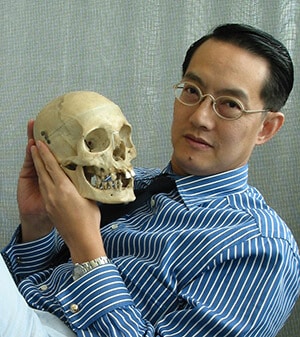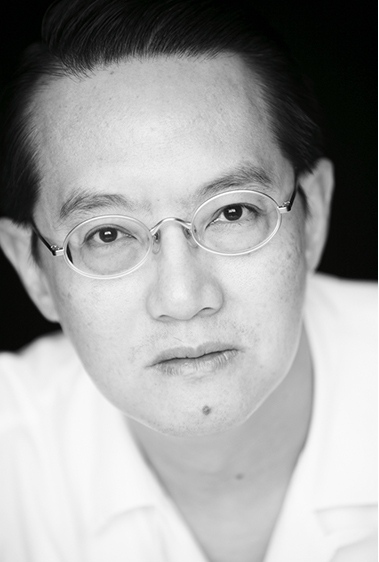
Double eyelid surgery is a highly requested procedure in Asia. Kohilam Kalimuthu looks into what the procedure involves.
Every year, thousands of people choose double eyelid surgery to improve the way they look. Known as Asian blepharoplasty, double eyelid surgery is an extremely popular cosmetic request among oriental Asians – almost 50 percent are born without a fold in the upper eyelid.
According to Singaporean plastic surgeon, Dr. Woffles Wu, “Double eyelid surgery is the single most sought after procedure among Asians worldwide.” The Asian eyelid is an eyelid without an upper crease; hence, the purpose of the procedure is to change the appearance of the upper eyelid by creating an eyelid crease. According to Dr. Wu, “Many opt for this surgery as single or droopy eyelids can make a person look older and inattentive, and impair vision.”
Double eyelid surgery is a simple and quick procedure that is usually performed under local anaesthesia, with the patient awake throughout the experience. “A small amount of local anaesthesia is preferred for light sedation,” explains Dr. Wu. He says this is important as the surgeon will need to verify the shape and position of the eyelid and crease during surgery – not being unconscious during the procedure allows the surgeon to ask the patient to open and close his or her eyes, so that the result of the surgery can be predicted.
Two techniques are commonly used to create double eyelids – the incisional technique and the non-incisional suture technique.
In this procedure, the eyelid is marked according to the anatomy of the eye and based on the height of the desired crease. An incision is made at the proposed height and skin is removed according to pre-existing anatomical conditions.
Small strips of muscle and fat are then removed. According to Dr. Wu, “The amount and location of removal (muscle and fat) has significant influence on the height, shape, and depth of the new crease.”
The wound is closed with tiny sutures, which create an attachment between the aponeurosis (layers of flat connective tissue separating muscles from each other) and the dermal layer (layer of skin beneath the epidermis that consists of connective tissue) of the skin. According to Dr. Wu, the sutures are removed approximately one week later, and the final height and shape of the crease are the result of both selective tissue removal, and precise internal tissue rearrangement.
The advantage of this method compared to the less invasive suture technique is that it allows the surgeon to address anatomical impediments to crease formation by altering and rearranging internal eyelid tissue layers. This technique also allows for more variation in the final height and shape of the crease.
However, one disadvantage is that this technique can be a challenge for an inexperienced surgeon, compared to the suture technique, which is easier to perform. Final healing time is also much longer when an incision is made.
Usually performed on an outpatient basis, the incisional technique takes about an hour to complete, and prices start around $2000.
This non-incisional technique involves the placement of one or more permanent sutures into the eyelids without the need for an incision, which, in essence, compresses an indentation into place. This technique is popular in Asia and is also called “quick double eyelid surgery” as it can be performed in twenty minutes.
The suture method is minimally invasive, faster to perform, involves a faster recovery period (as there are no open wounds), and costs less, starting around $1400.
One disadvantage, however, is that in most cases, the new crease weakens or disappears in a matter of years. This is because the crease isn’t created by a true anatomical rearrangement, but rather, by crushing internal tissues into place. Once the sutures weaken, the crease will fade and most patients will need to opt for a revision.
Additionally, irritation may arise from the sutures rubbing against the cornea of the eye, and suture placement and surgical manipulation may cause tissue injury, as well as uneven scars on the eyelid, which can sometimes be seen when a person’s eyes are closed or when blinking.
A variation of the suture technique, called the scarless technique, was pioneered by Dr. Wu. The principle is to “pass the needle and thread through the skin of the eyelid, creating a loop through the skin, and continuing into the cartilage of the tarsal plate (the plate of connective tissue forming the framework of an eyelid),” he says. “You then pull the loop so it closes tightly, so tightly that the loop cuts into the skin and makes a tiny imperceptible scar – this holds it in place.”
Fully adjustable and reversible, Dr. Wu says, “If a patient does not like the results, I will simply make a small nick with a scalpel beneath the upper lid to release each stitch, and after a short while, the crease will fall back out of the eyelid.”
In Dr. Wu’s scarless technique, the sutures will not weaken because the stitches go through the eyelid, as opposed to only going through skin and soft tissue, like that in the conventional suture technique.
According to Dr. Wu, the only instance at which his technique may not be suitable is when “dealing with patients with a lot of fat in their eyelids that need to be removed.”
For this, the incisional technique is the better approach to achieve a double eyelid.
Surgery is usually performed on an outpatient basis and the patient can go home that same day. Pain after surgery is mild, and a cold compress should be applied to the eyelids to prevent swelling. It is common for eyelids to be red, swollen and bruised for a few days, with a small amount of bloody fluid draining from the wound.
Stitches (for the incisional technique) are removed a week after surgery and incisions will turn red and be slightly bumpy in the first few weeks. Itching, bruising and swelling are common, but will disappear in two weeks.
The first fortnight is the most inconvenient as the patient will need to avoid activities that dry the eyes such as reading, watching television, wearing contact lenses and applying eye makeup, as well as using the computer. Also, sunglasses should be worn to protect the eyes from wind and sun irritation.
The creases will improve over time and gradually assume its approximate final position after about four months. “The new creases on the eyelids will always look too high, too deep or asymmetrical until swelling resolves,” points out Dr. Wu.
Potential complications of double eyelid surgery, regardless of the type of procedure opted for, include excessive tearing, a decreased sensation in the eyelid, dryness in the eyes and scarring – but these are only temporary until the eyes are fully healed.
The popularity of this procedure has emboldened many unlicensed practitioners to offer it without the necessary knowledge needed. “The double eyelid procedure should only be performed by a trained plastic surgeon,” says Dr. Wu.
Patients should be educated on various aspects of surgery and are encouraged to talk about their expectations and discern if surgery will accentuate their face and complement their features or vice versa. The success of surgery should not be evaluated during the early recovery period as full healing can take anywhere between 12 to 18 months, and some final asymmetry is almost inevitable.


